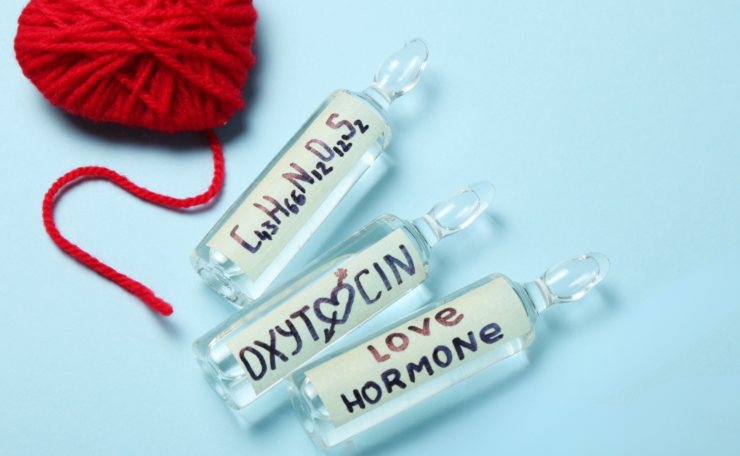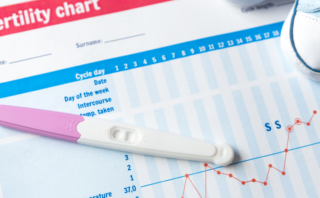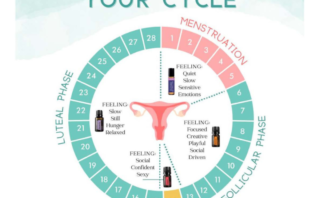Pitocin is a medication that can be used for the induction of labor when a physician wants to jumpstart a labor. Pitocin is a synthetic form of oxytocin, a hormone that the body naturally produces and that is responsible for causing contractions and cervical dilation. Even though the hormones are chemically similar in nature there are very fundamental differences between how the body responds to natural oxytocin and its synthetic counterpart.
Oxytocin’s Role in Spontaneous Labor
In spontaneous labor, natural oxytocin is what controls the contraction of uterine muscles that initiates labor. The hormone is actually produced by both the mother and the baby and the mother’s body reacts differently to each because each have separate jobs.
When the baby releases oxytocin, the hormone works to relax the uterine muscles and causes the cervix to dilate. Oxytocin from the mother is released into the body in a pulsing action and comes intermittently to allow the body a break between contractions.
The mother’s body also produces a spike in oxytocin right at birth. This burst of natural hormones stimulates the fetal ejection reflex which allows the baby to pass through the birth canal.
Using Pitocin for Medical Induction
Induction of labor using artificial means like Pitocin and other other medications happens during nearly one-quarter of births in the United States. Typically Pitocin is given for medical induction when the physical health of the patient or their baby depends on it. Some medical reasons for induction of labor include:
- Preeclampsia: This high blood pressure disorder in the mother can lead to birth complications when not addressed.
- Intrauterine growth restriction (IUGR): With this condition, if the baby has not grown as expected, they may require immediate neonatal care at birth.
- Low amniotic fluid: This condition occurs when there is not enough of the watery cushion which surrounds the baby left to sustain the pregnancy.
- Decreased fetal movement: A baby that is not moving as much as expected can be an indication of fetal distress and cause for immediate delivery.
Sometimes inductions are performed for reasons other than medical necessity, including timing and convenience of either the practitioner or the patient. This can occur when the body has not produced the natural oxytocin to prompt contractions and begin dilation, but the gestational period has reached a full term of 40+ weeks.
Pitocin vs. Oxytocin
Despite being a synthetic version of a hormone that your body already makes, the drug Pitocin and the natural hormone oxytocin do different things to the body throughout labor and delivery.
Contractions
Instead of entering your body in a pulsing way like oxytocin, Pitocin is given through an IV with the amount regulated by a pump, so your body receives a steady amount in an continuous manner. Even when the pump is used, however, it is still possible for contractions to end up being longer and stronger than your baby or placenta can handle.
This type of pump regulation also prevents your body from receiving a natural boost of oxytocin at delivery. This can cause the baby to spend a longer time in the birth canal which can lead to complications like oxygen deprivation.
When you are in labor naturally, your body responds to the contractions and oxytocin with the release of endorphins, a morphine-like substance that helps prevent and counteract the pain of childbirth. When you receive Pitocin, however, the body doesn’t respond and release endorphins the same way, even though you are in pain.
Cervical Dilation and Timing
Pitocin works much more slowly and with less effect than natural oxytocin when it comes to cervical dilation. This means that it takes more Pitocin than it would natural oxytocin for your labor to progress to the birth stage.
This is one of the reasons why labor with Pitocin can take longer than spontaneous labor. Every person needs a different amount of Pitocin to achieve the desired effect and until the process begins, there is not way for your physician to know the amount that is needed to achieve full dilation.
Research shows that inducing labor with Pitocin can increase the odds of labor complications such as failure to progress and uterine rupture due to the longer laboring that can occur. Labor induction can also increase the changes that a cesarean delivery occurs.
Post-Birth Bonding and Breastfeeding
When the body releases oxytocin, often referred to as the “love hormone,” it promotes bonding with the baby after birth. Because Pitocin interferes with the natural, internal release of oxytocin, it can disturb the bonding process.
The release of natural oxytocin is also partially responsible for stimulating  breastmilk production after birth. Unfortunately, some studies have shown that when Pitocin is used and the body’s natural production of oxytocin is delayed, it can take longer for breastmilk to come in, which can contribute to long-term breastfeeding issues.
breastmilk production after birth. Unfortunately, some studies have shown that when Pitocin is used and the body’s natural production of oxytocin is delayed, it can take longer for breastmilk to come in, which can contribute to long-term breastfeeding issues.
Skin-to-skin and breastfeeding (even before milk comes in) can work to increase the release of this natural oxytocin in the body to help quell these issues.
If you are presented with the option of inducing labor with Pitocin, make sure you discuss the reasons why this route is best for you and your baby. Your doctor may want to do additional testing to determine if induction is the right choice for your. The end goal should always be a safe birth and healthy baby.
For help and resources for pregnancy, birth and postpartum care, get in touch.





